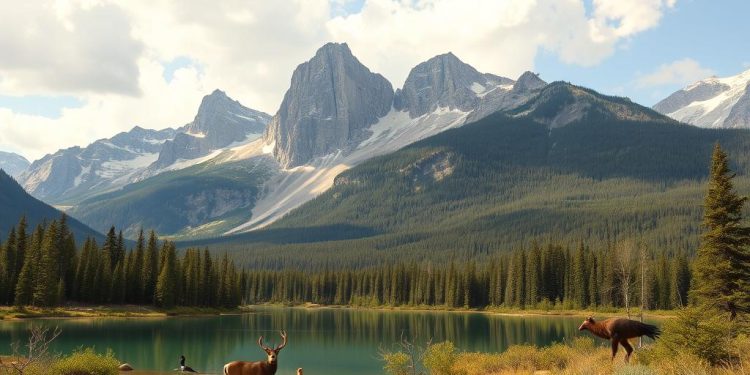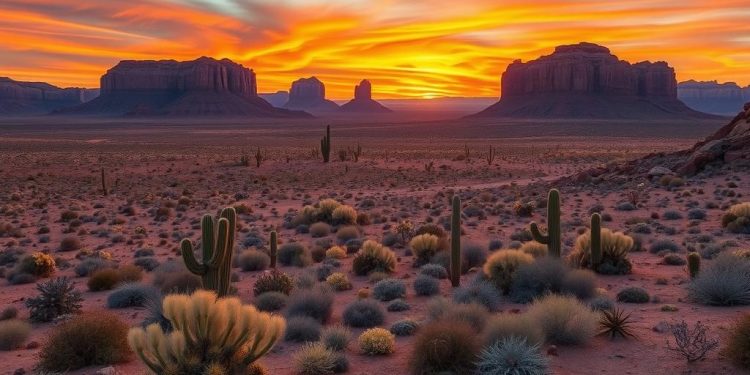Welcome to the vast and vibrant world of the Mississippi River, a remarkable waterway that spans over 2,300 miles from Lake Itasca in Minnesota to the Gulf of Mexico. As you traverse this iconic river, you’ll discover how it has shaped not just the geography of the United States, but also its culture, economy, and history. The Mississippi River is more than just a natural wonder; it is a significant artery that transports over 500 million tons of cargo annually, making it vital for commerce and trade. Throughout the ages, diverse communities along its banks have given rise to rich cultural traditions and musical genres, including jazz and blues, that resonate deeply in American society.
The river’s historical significance cannot be overstated, influencing the growth of cities like New Orleans, which became one of the busiest ports in the world by the early 1800s, and showcasing ecosystems that harbor a multitude of species. Whether you’re exploring the bustling Port of New Orleans, famous for its Creole and Cajun cuisine, or delving into the musical legacy of Memphis and St. Louis, the Mississippi River remains a testament to America’s complex and colorful identity. Join us as we navigate this essential part of the American experience.
The Geological Origins of the Mississippi River
The Mississippi River’s geological origins play a crucial role in understanding its significance in shaping the American landscape. This majestic river emerged over millions of years, resulting in a stunning tapestry of various terrains and ecosystems. Its river formation directly impacts U.S. waterways, creating a complex network that nourishes both terrestrial and aquatic life through its expansive reach.
Formation and Characteristics
The formation of the Mississippi River is a fascinating journey, beginning around 70 million years ago. The river initially scoured its path through the ancient landscape, influenced by geological formations such as the previously existing mountain chains during the late Cretaceous period. Over time, the river’s watershed expanded dramatically, ultimately covering an area of 1.25 million square miles, representing 41% of the contiguous United States.
The river stretches approximately 2,350 miles, with 30% of its length found in Minnesota. You can encounter a variety of unique characteristics along its banks. Average discharge rates vary considerably as you travel downstream. For instance, the average flow at Lake Itasca is just 6 cubic feet per second, while at Vicksburg, it surges to an astounding 679,000 cubic feet per second. Such variations underscore the river’s ability to facilitate not just a vibrant ecosystem but also essential transportation and irrigation routes.
Impact on U.S. Waterways
As a significant player in the hydrological system, the Mississippi River influences many U.S. waterways. Parts of 32 states and 2 Canadian provinces contribute to its flow, establishing it as a vital artery for the region. This interconnected system promotes biodiversity, directly benefiting numerous species.
The river’s magnificent flow dynamics help regulate and sustain local climates and ecosystems, making it indispensable to the surrounding communities. Its waters have historically supported a variety of human activities, from agriculture to shipping and trade, affirming the Mississippi River’s standing as both a natural wonder and a crucial resource.
| Geological Insights | Data |
|---|---|
| Length of the River | 2,350 miles |
| Area Drained | 1.25 million square miles |
| States Involved | 32 states and 2 provinces |
| Average Discharge at Lake Itasca | 6 cfs |
| Average Discharge at Vicksburg | 679,000 cfs |
| Expansion of Watershed | from Rockies to Appalachians |
The Role of the Mississippi River in American History
The Mississippi River plays a fundamental role in shaping the narrative of American history. It acted as a lifeline throughout the nation’s expansion and dramatic conflicts, particularly during westward expansion and the Civil War. This mighty river served as a corridor for settlers and commerce, linking communities and creating economic opportunities across states.
Westward Expansion and Early Settlements
During the 18th and 19th centuries, the Mississippi River became essential for westward expansion. It provided a passage for pioneers seeking new land and resources. As settlers moved along the river, they established new communities that contributed to the growing fabric of the United States. The river’s vastness allowed for the efficient movement of goods and people, further solidifying its importance in connecting isolated areas.
Significance During the Civil War
In the midst of the Civil War, control of the Mississippi River became a central focus for both the Union and Confederate forces. The river’s strategic importance was evident in military campaigns, such as the Battle of Vicksburg, where seizing control led to successful transportation of troops and supplies. This vital artery not only influenced the outcome of many combat operations but also shaped the course of American history by determining the fate of the nation during its most tumultuous period.
Transportation and Commerce Along the Mississippi River
The Mississippi River has long played a pivotal role in the transportation and commerce of the United States. Its extensive waters served as a vital artery connecting various regions, making it indispensable for trade. The historical significance of steamboats marks a transformative period in the 19th century, contributing to the river’s status as a key route for the movement of goods.
Historical Significance of Steamboats
Steamboats revolutionized transportation on the Mississippi River. They enabled efficient movement of cargo, including cotton and timber, fueling the economic development of towns along the riverbanks. By the early 1800s, the bustling port of New Orleans emerged as a major hub, showcasing the steamboat’s profound impact on commerce. This innovation not only facilitated trade but also encouraged the settlement of the region, as accessibility to goods supported growing communities.
Current Cargo Transportation Statistics
Today, the Mississippi River continues to be an essential pathway for cargo movement. Annually, over 500 million tons of freight traverse its waters, emphasizing its ongoing relevance in modern transportation. Various key goods, including agricultural products, are moved along this route, underscoring the river’s significance in supporting the U.S. economy. This continuous trade underscores the river’s unbroken legacy as a fundamental component of American commerce.
Ecosystems and Wildlife Along the River
The Mississippi River and its surroundings showcase a variety of ecosystems that are home to remarkable wildlife. These habitats foster biodiversity, contributing significantly to both regional ecology and local economies. Understanding and preserving these ecosystems becomes essential as human activities place increasing pressure on their health.
Diverse Habitats and Species
From the bustling wetlands of the delta to the serene waters upstream, the Mississippi River is a sanctuary for numerous species. An estimated eight million ducks, geese, and swans migrate annually along the lower part of the Mississippi Flyway, a critical route extending all the way to northern Canada. Migratory birds such as Canada geese, mallard ducks, and pintails rely on the river’s ecosystems for sustenance and breeding grounds. Additionally, significant fish populations thrive in the river, including species like catfish, walleyes, and garfish, with the sport-fishing industry in Minnesota and Wisconsin heavily dependent on walleyes and suckers. However, fisheries for shrimp and crab in the brackish waters are currently facing decline, underscoring the fragility of these systems.
Importance of Conservation Efforts
Conservation efforts play a vital role in safeguarding these habitats. Initiatives such as the Upper Mississippi River Restoration (UMRR) program focus on ecological restoration and habitat management to combat the degradation caused by human interference, including the operation of navigation channels and land use changes. With over 318,750 acres of the Upper Mississippi floodplain recognized as Wetlands of International Importance, protecting these areas ensures the longevity of the diverse ecosystems present. The National Ecosystem Restoration Plan (NESP) highlights a commitment of $1.717 billion over 15 years for improving the river’s health. Approximately $10.42 million is allocated each year for monitoring these ecosystem dynamics. Together, these conservation efforts help maintain the lush biodiversity of the river and enhance the quality of life for communities that depend on its resources.
Cultural Influences of the Mississippi River
The Mississippi River has shaped much of what defines American culture today. As it flows through diverse regions, it became a cradle for musical and culinary traditions that still resonate across the country. The interplay of various cultural influences along its banks has given rise to unique expressions of identity, making it a vital part of the American narrative.
Birthplaces of Jazz and Blues
Music thrives along the Mississippi River, with cities like New Orleans and Memphis at the forefront. These locations served as epicenters for the birth of jazz and blues, genres that reflect the rich tapestry of cultural influences. Renowned musicians, including Louis Armstrong and B.B. King, called these vibrant cities home, pushing the limits of their art and crafting sounds that would shape the music industry forever. The river facilitated the convergence of diverse musical styles, allowing African rhythms, European melodies, and local folk traditions to meld into something entirely new.
Impact on Culinary Traditions
The culinary traditions along the Mississippi River are just as remarkable as its musical heritage. The region is celebrated for its Creole, Cajun, and Southern cuisines, each influenced by the cultural richness of its inhabitants. Signature dishes such as gumbo, jambalaya, and po’boys showcase a blend of ingredients and flavors that tell the story of the people who live there. The river not only supplies fresh seafood but also serves as a highway for transporting spices and produce, ensuring that these culinary traditions continue to thrive. The resulting gastronomy reflects a blend of histories and communities, each contributing to the vibrant food culture found today.
| Cultural Element | Description | Key Cities |
|---|---|---|
| Music | Jazz and blues originated from the blending of diverse musical traditions along the river. | New Orleans, Memphis, St. Louis |
| Culinary Traditions | Creole, Cajun, and Southern cuisine represent the cultural melding in the region. | New Orleans, Baton Rouge, Memphis |
| Historical Influence | The river has been a conduit for cultural exchange, shaping music and food. | Throughout the Mississippi Valley |
The Mississippi Delta: A Unique Ecosystem
The Mississippi Delta stands out for its extraordinary geography and rich biodiversity, creating a unique ecosystem unlike any other. Its intricate network of wetlands, estuaries, and bays provides critical habitats for a wide variety of species, including numerous birds and aquatic life. This ecological treasure not only supports wildlife but also plays a vital role in the local economy and communities relying on its resources.
Geography and Biodiversity
The geographical features of the Mississippi Delta create a unique ecosystem that fosters substantial biodiversity. The area is characterized by:
- Diverse wetland habitats, including swamps, marshes, and rivers.
- A rich variety of plant life, which supports numerous species of fish and wildlife.
- An essential refuge for migratory birds, making it a critical location for birdwatching and conservation efforts.
Protecting this biodiversity is essential not only for ecological balance but also for maintaining the cultural heritage of the region. The Mississippi Delta is a habitat that needs conservation, highlighting the interconnectedness between nature and community.
Challenges Faced by the Delta Region
Despite its significance, the Mississippi Delta faces several pressing challenges that endanger its unique ecosystem. Some of these challenges include:
- Land loss due to erosion and sea-level rise.
- Pollution from industrial activities affecting water quality.
- Habitat destruction caused by urbanization and agricultural practices.
Addressing these challenges is crucial for preserving the integrity of the Mississippi Delta. Community involvement and strategic conservation measures are necessary to ensure its sustainability for future generations.
The Mississippi River: Lifeblood of Agriculture
The Mississippi River plays a crucial role in supporting agriculture across the United States. It extends over 2,300 miles, draining approximately 41% of the contiguous U.S. and impacting farming practices within the expansive basin. Your understanding of how this waterway influences crop production can illuminate its importance to the American economy.
Farming and Crop Production
This river basin accounts for an astonishing 92% of U.S. agricultural exports. It supports more than 30 million acres of farmland, making it essential for growing staples like soybeans and corn. In fact, the region produces 78% of the world’s soybeans and 60% of its corn. A single barge operating on the river can carry an amount equal to 70 truckloads of grain, showcasing the river’s efficiency in transporting crops.
Importance of Flood Control Measures
While the river provides vital resources for agriculture, flood control is imperative for sustaining crop production. Severe flooding can result in losses of up to $20 billion, and farmers are increasingly challenged by climate variability, which can impact agricultural productivity by as much as 30%. Implementing effective flood control measures enables farmers to protect their livelihoods against the heavy damages caused by extreme weather events. This proactive approach ensures that agricultural lands remain productive, allowing you to access a stable food supply.
| Statistic | Value |
|---|---|
| Percentage of U.S. agricultural exports from the river basin | 92% |
| Acreage supported by the river for agriculture | 30 million acres |
| World’s soybeans produced by the region | 78% |
| World’s corn produced by the region | 60% |
| Estimated losses from severe flooding | $10-20 billion |
| Impact of climate variability on farmland productivity | Up to 30% |
Conclusion
The Mississippi River stands as a powerful symbol of American life, weaving together the cultural significance and economic impact that spans generations. Stretching over 2,340 miles, it connects diverse communities across 31 U.S. states and even two Canadian provinces, showcasing its vast role in shaping the fabric of this nation. The river’s impressive discharge averages around 600,000 cubic feet per second, reflecting the immense quantity of resources it carries along its journey, impacting agriculture, commerce, and countless ecosystems along the way.
As you consider the historical context and rich tapestry of life along the Mississippi River, it’s clear that this mighty waterway has influenced everything from early settlements to contemporary trade routes. The river not only supported early American expansion but continues to do so today, as seen in its status as a vital artery for transporting nearly 175 million tons of freight annually through major ports like the Port of New Orleans. Its waterways are essential for trade, connecting the heart of America to global markets.
Ultimately, the Mississippi River encapsulates the spirit of resilience and cultural diversity within the United States. It plays a pivotal role in sustaining economies and maintaining rich ecosystems. To secure its future, preserving this natural marvel is imperative, allowing future generations to enjoy and appreciate the profound legacy that the Mississippi River holds.







